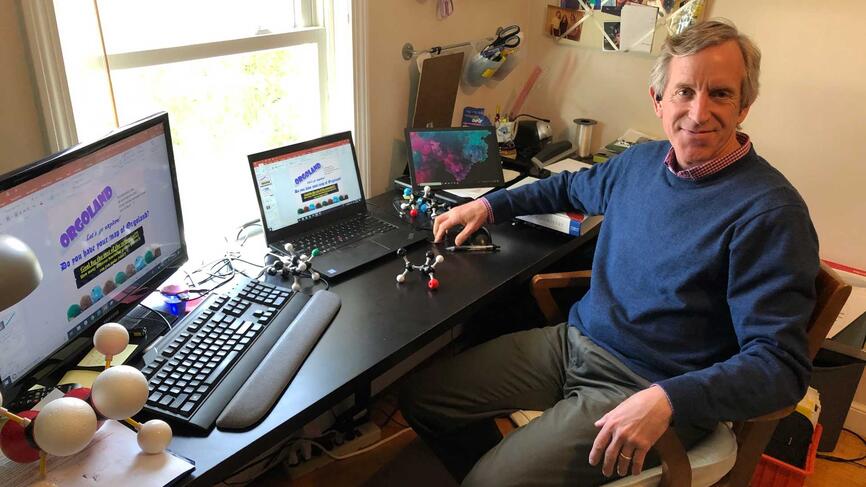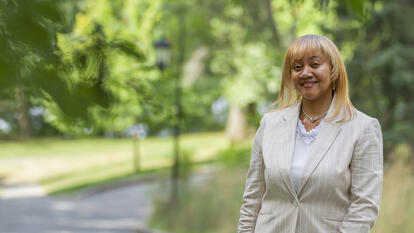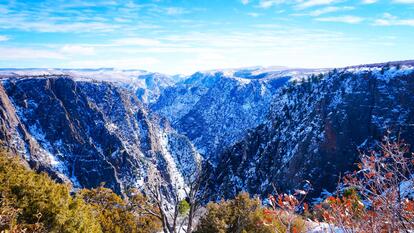
Chemistry Labs May Look Different During Remote Instruction, but Community Remains Elemental
Normally, it’s not hard to find Nick Doe’s organic chemistry lab at Wellesley—just look for his bright, tie-dyed lab coat, or listen for the sounds of Fleetwood Mac and other student-curated selections playing in the background while the class conducts experiments.
When the College moved to remote instruction due to the COVID-19 pandemic, Doe, senior instructor in chemistry laboratory, and his colleagues in the chemistry department had to come up with new ways to conduct labs, create real-world scenarios, and maintain their close-knit community.
Doe has tried to foster feelings of connection in his remote labs, starting lectures on his YouTube channel, “Orgoland in cyberSPACE,” with quirky music, puns, and fun connections to the material he’s presenting. As his students are now spread all over the world, he has created study groups for those in similar time zones, and like many other faculty members, he is holding virtual office hours during a range of time frames. In the absence of traditional, hands-on experiments, Doe has been providing specific data from past labs so that “students will still get a taste of real-world science, filled with all the imperfections and pitfalls that are inherent in performing lab experiments.”

Remote learning poses a distinct challenge for chemistry courses in particular. “Almost all of our courses have a laboratory component, and those are an integral part of the course experience as a whole,” said Don Elmore, professor of chemistry and department chair.
“Certainly, one aspect of working in a laboratory is developing a set of technical skills, some of which really aren’t amenable to an online format,” Elmore continued. “However, many of our primary learning goals that are addressed through laboratory experiences relate to how one can develop a research question, come up with an experimental approach to address that question, analyze and interpret the data from that approach, and consider the appropriate troubleshooting or next steps based on those interpretations. We can still emphasize these goals through adjusted versions of our lab experiences.”
In the labs for their introductory chemistry courses, instructors Mona Hall, Terianna Wax, and Gyunghoon Kang have grouped students in teams of three. The team members rotate their roles from week to week—scribes, quality control analysts, and managers—to recreate the collaborative environments of both a classroom and a physical lab setting.
In Integrated Biophysical Chemistry Advanced Laboratory, students spent the first part of the semester developing independent projects and experiments that they planned to work on during the second part, which they will not be able to do remotely.
“We have been really trying to think about ways to maintain the sense of community that is very important to us, continuing with some traditions and introducing a few others.”
Don Elmore, professor of chemistry
Course instructor Elizabeth Oakes has created an alternative plan to emphasize the main goals of the course: to really understand experimental design, and to frame and clearly communicate research questions. To that end, students are making instructional videos about either their original proposed projects or the diagnosis and treatment of COVID-19.
Mathew Tantama, assistant professor of chemistry, has developed a series of video lectures linking concepts he teaches in his biochemistry classes to the coronavirus and how it operates within the human body. His videos on the virus connect with the weekly topics he had originally planned to cover, including pairing content on the virus’s proteases with the course’s enzymes module. This week, his video lecture is on the science of COVID-19 testing, to accompany his students’ examination of nucleic acids.
Elmore said that in addition to reshaping their labs and curriculum, “we have been really trying to think about ways to maintain the sense of community that is very important to us, continuing with some traditions and introducing a few others.”
Last week, for example, the department introduced a weekly chemistry puzzle for students; the winner, chosen at random from among participants, receives a beaker mug. For the first puzzle, students had to use their knowledge of the periodic table to solve this riddle: Fame is fleeting, obscurity is forever.
On April 17, the department will conduct a Zoom awards ceremony for intro and organic chemistry students to recognize exceptional students from those courses, along with a pub-style trivia contest with questions about Wellesley’s chemistry department and chemical history.
Perhaps a new tradition after this year will be horse guest lecturers. The Boston Globe recently wrote about a visitor to chemistry professor Chris Arumainayagam’s Chemistry of the Heavens class: Emma Miller ’20’s mustang, Story. Arumainayagam asked Miller if she would bring her horse to class, saying it would be “the pinnacle of his 29-year career at Wellesley College.” Story made his chemistry community debut from Miller’s Riverton, Wyo., garage. Miller told the Globe that “Everyone loved it…It was the first time I saw some of my classmates smile.”



